Women’s T20 World Cup: the real life fairytale of how Thailand came to mix it with the world’s best
Performing a minor miracle to qualify for the T20 World Cup, Thailand is busy winning plenty of fans in Australia. From not even having a team 13 years ago, this is the story of an unlikely cricketing revolution.
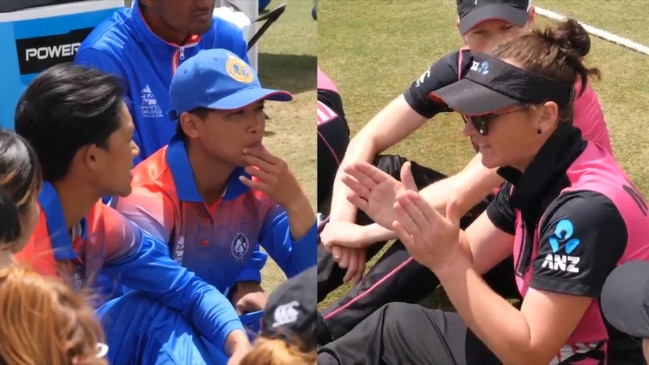
Cricket World Cup
Don't miss out on the headlines from Cricket World Cup. Followed categories will be added to My News.
Whatever happens in Canberra on Wednesday, Thailand players will stand in a line and bow to all quarters of Manuka Oval after their World Cup clash against England.
“It’s just deeply rooted in our tradition,” team manager Shan Kader said.
“It’s about showing respect to umpires, fans, match officials, curators and the ground itself.”
Perhaps all of the above should bow to Thailand. Rewind 13 years and this was a country without a women’s team.
Watch every match of the ICC Women’s T20 World Cup LIVE & Ad-Break Free with FOX CRICKET on KAYO. New to Kayo? Get your 14-day free trial & start streaming instantly >

When Kader was instructed to find a group of girls to compete in the 2007 Asian Cricket Council tournament, it wasn’t exactly what you’d call a success.
“We put a few girls together from transition sports – softball, volleyball, basketball, hockey – and sent them in,” he said.
“They had two months to prepare, and we lost everything before lunch.”
Thailand was bowled out for 40 in its first three games, by Nepal, Hong Kong and Malaysia. Extras (16) was the main source of runs in its maiden match.
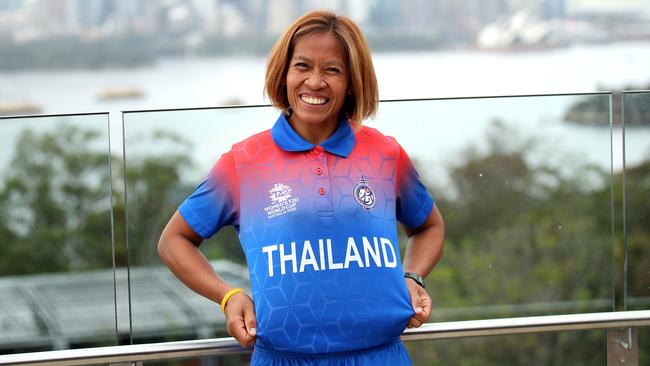
Three key questions need answering as Thailand prepares to take on the inaugural T20 champion on Wednesday.
Who are these girls?
How on earth did they qualify for the World Cup?
And can they compete?
The answer to the first question is jaw-dropping. This is a squad dominated by “the daughters of rice farmers” and completed by orphans.
“They don’t come from well-off backgrounds,” Kader said.
“They’re very resilient, hardworking girls and very humble. Some of the girls are orphans – that’s how it is.
“They’ve done really well for themselves and grown up to be really good, responsible human beings.”

The upbringings lashed with poverty can be explained by Cricket Association of Thailand’s strategy.
With the sport struggling to create a footprint in major cities, like Bangkok, they targeted rural areas where there were few competing activities.
Kader, a part-time coach, was appointed by CAT full-time in 2007 because he was proficient in both the sport and English.
“When the offer was on the table I said, ‘If you want me to do this it’s going to be on my terms and we’re going to go to the roots and to the provinces and have cricket played by Thai people’,” he said.
“That’s the only way the sport is going to grow and we can grow the culture of cricket. From three provinces we’re now at 14 provinces, slowly growing.”
Kader travelled to remote areas and taught cricket to PE teachers with a plastic bat and ball. Regional tournaments slowly popped up around the country.
It’s a dedication that’s been fostered by the World Cup team. Take spinner Suleeporn Laomi for example, who zips up her cricket bag and boards a bus to training from Chiang Mai.
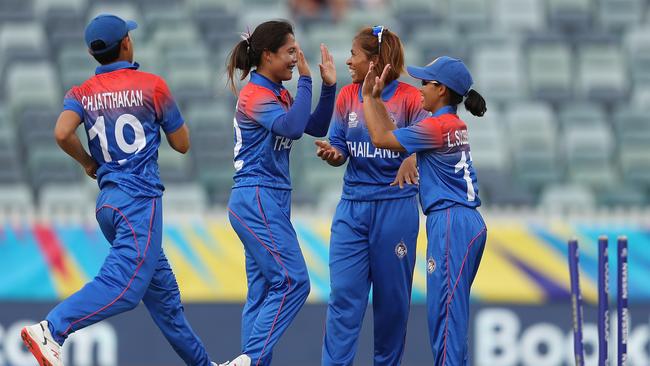
The 600km commute south along Thailand’s bumpy roads takes nine hours.
“It’s pretty tough,” Kader said.
“She’s on the bus overnight, gets in, trains for the period she can and then hops back on the bus and goes back to university.”
Laomi, 22, is one of 15-20 Thai girls that squeeze into a two-storey house in Bangkok for training camps.
“I think it’s a bit claustrophobic in there, a lot of emotions,” Kader said.
“But it’s what makes them a bit more tight knit. They see each other every day and understand the dynamics of each other, so they support each other really well on the field.”
Pitches back home are “low and sad”. But how did these girls win a ticket to Australia’s “good batting decks” for the showpiece tournament?
Well, in 2009 Thailand returned to the ACC tournament and won six-straight games in Malaysia.
They lost the final, but the appeal of cricket had been won.
Watch every T20 World Cup match LIVE on Fox Cricket. Either subscribe to Foxtel for all your cricket action or stream all the games live on Kayo Sports!
The charge to the World Cup included a T20-record 17-game winning streak.
That included victories on the road against Scotland, Netherlands and Ireland as they left established cricketing nations in their dust.
They’ve also knocked off full member nation Sri Lanka and a gutsy victory against Papua New Guinea in Dundee sealed a spot on the world stage.
Rivals have been stunned at Thailand’s sharp fielding. Plenty think it stems from the softball background.
But Kader pointed out only three World Cup members – captain Sornnarin Tippoch, vice-captain Nattaya Boochatham and Naruemol Chaiwai – transitioned from soft ball, with the rest products of its academy.
Throwing barehanded was new to the softballers, anyway.
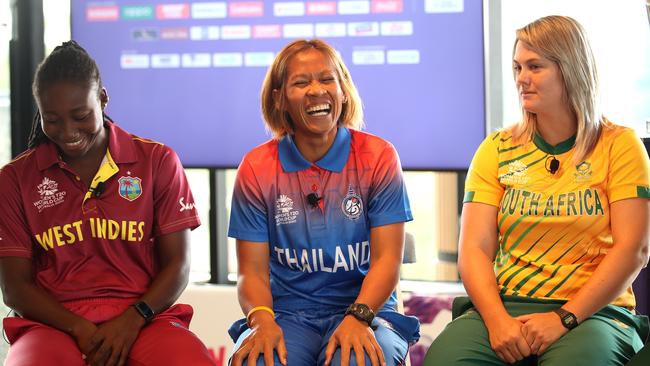
The Thai attack is renowned for bowling lines as tight as piano wire and targeting the stumps. Its batting has been the weakness.
That’s why coach Harshal Pathak, a former first-class cricketer from India, took the core batters to Pune for a training camp before the rest of the squad linked up last December.
“We spent a good two to three months in India just playing cricket, playing cricket, playing cricket.
Kader said.
“We faced Under-16 boys that could replicate the speed of a (Lea) Tahuhu or a (Shabnim) Ismail on those kind of decks. That’s how we prepared.”
South Africa Ismail has been clocked at 128km, while Kiwi Tahuhu has registered 126km.
Coach Pathak thought India’s state boys were the closest thing to prepare for World Cup attacks.
Pathak prefers centre-wicket practice to the nets because “it’s a battle, rather than aimlessly hitting balls”.
He sets targets simulating matches. Can Thailand’s batters thump 30 runs off 12 balls? If the bowlers don’t bowl to the fields set, they have to go and fetch the ball.
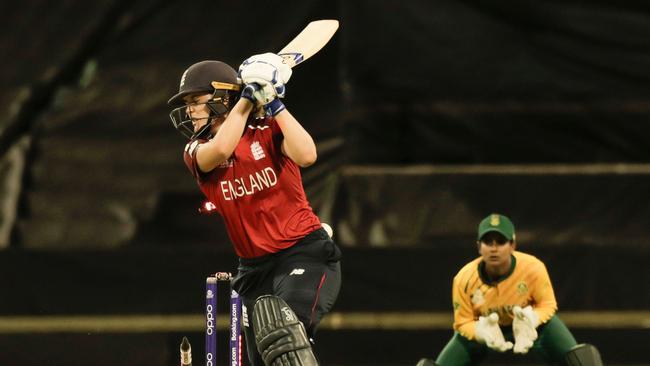
During the camp in India, optional English lessons with private tutors would be flanked by morning training and an evening yoga, meditation or visualisation session.
They help with decision making. After all, isn’t decision-making what facing fast bowling is all about?
From remote rice farms and orphanages in rural Thailand to business class flights and plush hotels in Australia for a Twenty20 World Cup, the Thailand journey is simply out of this world.
Lofty expectations – “the aim is registering two wins” – have been set. But Thailand is armed with a secret weapon.
Homework. The Thais have done theirs and are confident rivals have not, because their off-Broadway charge to Australia largely went uncaptured.
Thailand’s bowlers will know England ace Dani Wyatt’s scoring zones today. But analysing Thai opener Nattakan Chantam, who Kader has backed to fire this tournament? Good luck.
“We’re banking on this as our surprise element,” Kader said.
“There’s not so much content of us playing. If we use that to our advantage and have them guessing and try to build pressure on them, they’ll lose out with a couple of dot balls or good overs.”
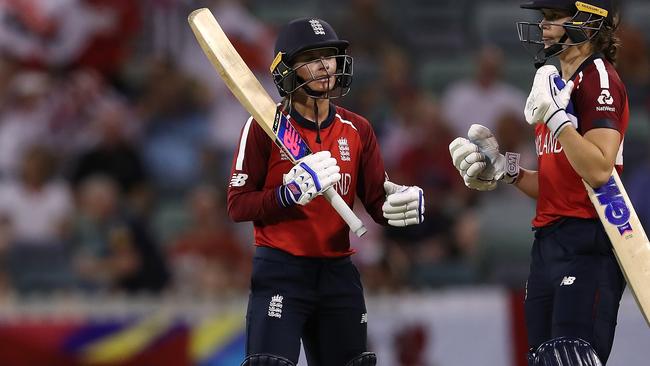
The world is cheering for this heartwarming story. Skipper Tippoch walked into the pre-tournament captain’s day and lit up the room with her infectious smile. It’s a common occurrence.
When Pathak approached New Zealand captain Sophie Devine for a tutorial after last week’s practice match, the Kiwi involved everyone.
“That was very nice of them,” Kader said.
“Sophie, the champion she is, said you might as well bring the whole team and the bowlers can work with the bowlers, and the batters can work with the batters.”
Like all cricket fans, the Thai girls – who have received central contracts before the men – look up to Virat Kohli, AB de Villiers, Kumar Sangakkara and Brendon McCullum.
“But in the women it is (Ellyse) Perry and (Meg) Lanning,” Kader said.
“They love the Aussie girls.”
Originally published as Women’s T20 World Cup: the real life fairytale of how Thailand came to mix it with the world’s best
